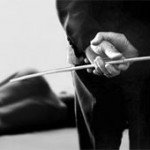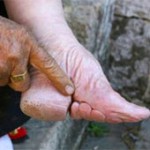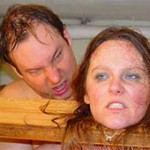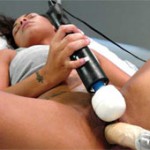pain

Falling in love, love or suffering at first sight are the strongest emotions. After all, the first impression and the first emotion is the basis of a relationship. But most often it is mistaken….
Continue reading

«The Red Pain» BDSM nightclub. Strange name, isn’t it? Although in such establishments everything will seem strange for an ordinary person. Pain is the foundation of BDSM. That much is clear. But why red pain? Hmm, have you ever experienced real pain? That’s the clue.
Continue reading

Many believe that rebirth is a process of reincarnation, imagining a clear picture of a Phoenix rising from the ashes. But sometimes rebirth is just a click in the head. One person turns into a completely different person. Or maybe this is just madness?
Continue reading

Castling is a king moves in which two pieces move at the same time: king and rook. They change places. Just like in real life, anyone can switch places with anyone… and everything changes.
Continue reading

It is impossible to say who the first people were with stretched ears, or why they did it. Today, many cultures (including our own!) practice the art of ear stretching for many different reasons. Religion, coming of age ceremonies, warding off evil, sexual enhancement and physical beauty are common motivations. However, that just barely scratches the surface as there are many other reasons, as well. People all over the world still practice ear stretching. From the Masai tribes in Kenya to the Huaorani tribe in the Amazon Basin, stretched ears are still a common sight. It is a fascinating testament of human culture that a Western youth can walk into a piercing shop to select stretched ear jewelry while a Hmong youth in Thailand selects from an array of silver tubes.

Few topics in the BDSM world generate as much debate as does the issue of punishment. Whatever form it takes, it is an integral part of every D/s relationship, and is the source of much misunderstanding.
It’s important to understand one fundamental thing about punishment. By it’s nature, it is something that is not enjoyable. It is unwelcome, to be avoided, and acts as negative motivation (“I’ll not do this because if I do, something I don’t like will happen to me.”) Many novices confuse “punishment” for something that is erotic and enjoyable: a spanking, a flogging – something desirable. But it is not. Punishment is not play. Punishment is meant for one reason only: to alter behavior. It is a useful and necessary tool, and exists in some form in every close relationship we have. With it, dominants can teach submissives how to behave and help submissives modify their behavior to better please.
There is only one fundamental offense: displeasing the dominant. Failing to do so or intentionally displeasing the dominant is grounds for punishment, and it is the dominant alone who makes the decision as to whether or not the submissive has been pleasing. Punishment can take many forms – from a disapproving look to a beating – and is limited only by your imagination and how well you know your submissive.
Is there too much corporal punishment in the scene? It is the easy way out for many dominants. Often it is a reaction, rather than something that is considered. It takes much more effort to come up with a non-physical method of correction. Many of us were brought up with corporal punishment, learning that misbehavior should lead to physical pain. Those social influences can be very powerful. In the long run, however, physical punishment is usually the least effective way to alter behavior.
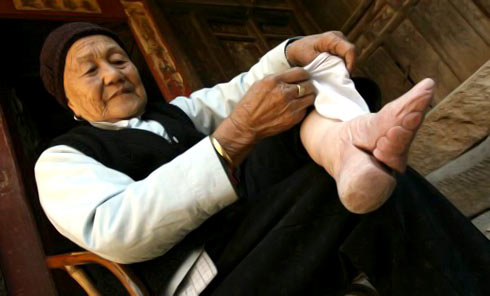
Foot binding began late in the T’ang Dynasty (618-906) and it gradually spread through the upper class during the Song Dynasty (960-1297). During the Ming period (1368-1644) and the Ching Dynasty (1644-1911) the custom of foot binding spread through the overwhelming majority of the Chinese population until it was finally outlawed in the 1911 Revolution of Sun Yat-Sen.
There are several legends that endeavor to account for the inception of this custom, one is that the concubine of a Chinese prince named Yao Niang walked so gracefully that it seemed as if she “skimmed over the top of golden lilies.” At that time the “lily footed woman” or a woman with bound feet became the model in China. A second legend says that this concubine, Yao Niang, was ordered to bind her feet so that her feet would look like new moons. A third legend says that women bound their feet out of sympathy for an Empress with club feet. Yet another originating in the Sung dynasty (960-976 BC) in the court of Prince Li Yu, whose favorite concubine who was required to dance with her feet bound, toe-dancing an early variation of ballet, the royal craze moved down the social ladder, eventually reaching peasants who hoped to achieve higher status through smaller feet.
Continue reading
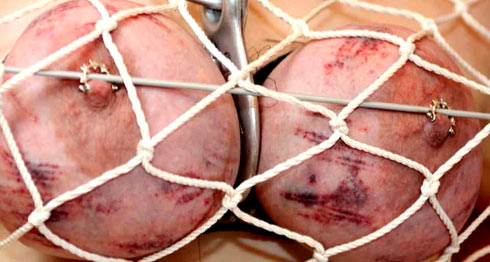
If you engage in percussion play – and it doesn’t matter if it is flagellation with canes, whips, floggers, crops, pieces of 4 by 2 or strands of liquorice, there are going to be times, more often than not, where there will be bruising to the tissue no matter how safely you play. It may be severe or mild depending on the level of play and the period one has actually engaged in that particular play. Some submissive/bottoms develop what is called the leather bottom, a thickening of the skin tissue in that area, especially if percussion play is a prominent part of their BDSM play.
Bruising is an area of discolored skin. It develops when the lining of small blood vessels are damaged, allowing blood cells to escape into the skin and tissues. A bruise may be very small and may blend in with the texture of the skin, or it may be large, swollen, and painful. A bruise usually starts out as a red area or as tiny red dots or splotches on the skin. Within days to a week or so, the bruise becomes more purple. As it heals, it becomes brownish-yellow. Generally, bruises heal and disappear within 2 to 3 weeks. To minimize swelling, pain, and bruising after a traumatic injury, always apply cold compresses to the injured area as soon as possible and keep them on for most of the first twelve hours, with occasional breaks to prevent excessive chilling. Take homeopathic arnica tablets and massage tincture of arnica into the bruised area. Homeopathic remedies, used as first aid, can soothe the pain and soreness of bruises that come from injury, reduce swelling and fluid leakage into surrounding tissues, and generally encourage healing. A carefully-chosen remedy may also help correct a person’s tendency toward easy bruising and soreness.
Continue reading
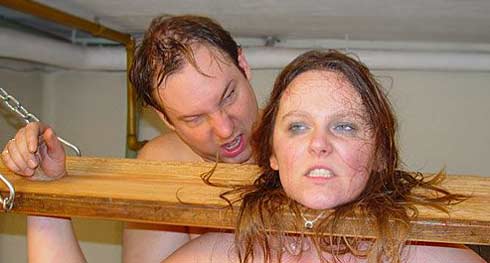
Sadism is pleasure in the infliction of pain or humiliation upon another person. This term describes consensual practices, often sexual, but not necessarily so, within the BDSM community. Sadist is one who is aroused, excited, or receives sexual gratification from inflicting pain on another. A sadist does not necessarily take pleasure in inflicting pain indiscriminately; for most sadists, the pleasure relies on knowing that the subject is also enjoying the experience. But these terms may be also used clinically, in psychotherapy, to describe mental illnesses, psychopathology or counterproductive coping mechanisms. Sadism is not necessarily associated with criminality or murder. The term sadist is thrown around very easily, the word itself may send signals, may attract and is quite often used to paint a picture that fits the world of fantasy. A seal, if you like, of quality play to come for some. Forbidden fruit always tastes the best. Some may visualise themselves as sadists but that may not necessarily be the case. They may just be extreme in some areas. Have a particular bent that is somewhat darker. Dread… political correctness, is there are some that fit the definition of a sadist however display the controls within themselves to play safely. There are some that don’t.
The word “sadism” was derived from the name of Donatien Alphonse Francois, better known as the Marquis de Sade, a French author who lived from 1740 to 1814, famous for his works of sexual arousal driven by physical suffering. He was imprisoned without trial as an “administrative punishment”, for fear of scandal, after the publishing of “Justine”, and “Juliette”. Later declared insane he was transferred to Charenton Asylum where in 1814 he died of ill health aged 74. De Sade spent 27 years of his adult life in prisons, dungeons, and asylums throughout France for reasons that included “excesses committed in a brothel”, kidnapping and sexual assault, poisoning, and homosexual sodomy. The German psychologist Richard von Krafft-Ebing in 1898 gave sadism the professional definition: a sexual perversion with strong impulses to coitus, coupled with prepatory acts of maltreatment, even murder (necrophilia, then called “lustmurder”) which occurs primarily because of an inability to be satisfied with coitus.
Continue reading

Submissive girl is tautly secured spread-eagle to the floor via chains and cuffs. Once in place Master takes over and begins to paint hot wax onto her body with a brush. Lots of wax. The first words out of her mouth are… that’s really fucking hot… Master just keeps working as though she didnt say a thing. She screams. Her breasts move about. She raises her head in exasperation. Her breathing is heavy and labored. And theres lots of wax to go. She screams more. Master pops in and puts the Hitachi on her for a bit. She doesn’t like that at all. Finally she begs to simply be beaten. But thats too easy. She alternates between anger, desperation and sheer terror. Sometimes a hand or a foot just begins to move independently, rocking on its own in some crazy rhythm propelled by pain. And if she didn’t have enough discomfort going on He placed a clothespin on her clit. Then He placed the Hitachi on the end of the clothespin. This made her scream out Aw, FUCK! She seemed like she was getting a little bored. Master asked her how it felt but it was hard to hear her over the constant whacking sound the clothespin was making each time it was vibed off the Hitachi. Rather like a woodpecker making a hole in a tree (or the side of the house in the case of The Attic). But He made out something about how much it hurt.


 TV BDSM - New BDSM Porn Tube
TV BDSM - New BDSM Porn Tube